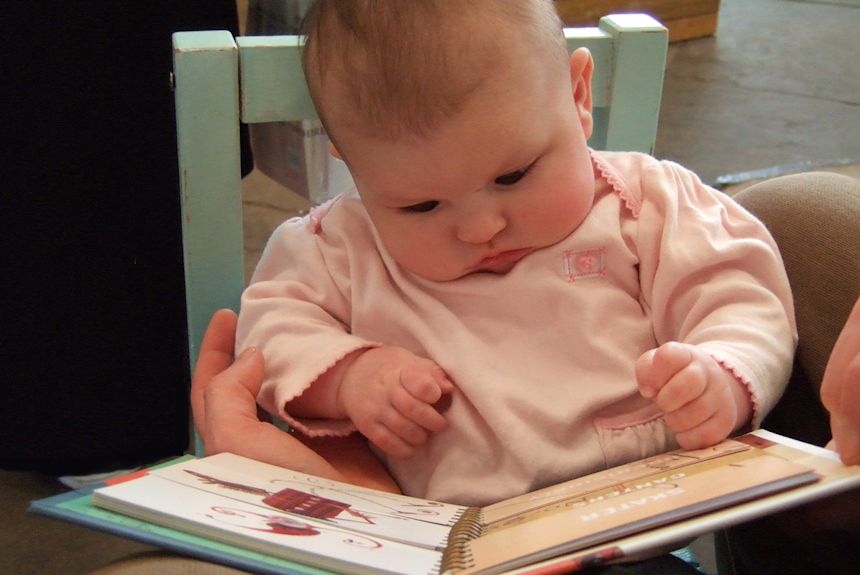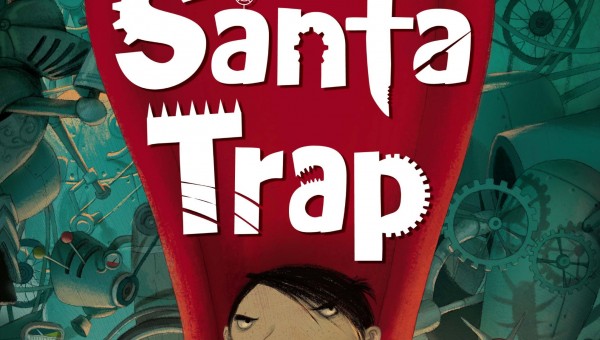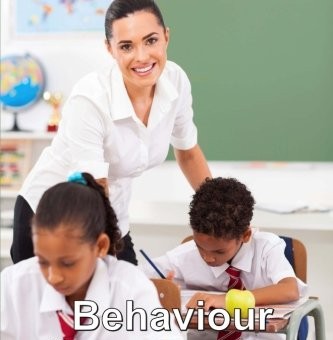In the current educational system, your children are taught to read using phonics or, to use its full name, systematic synthetic phonics. This method uses a very different approach to teaching reading than that which most parents will have experienced when they went to school. For that reason, many parents feel very much in the dark and out of their depth when it comes to helping their own children to read using phonics. For that reason, I’ve put together a parental guide to phonics and how young children are taught to read in schools so that you can begin to understand how phonics works and how you can help your children to read at home.
What is Phonics?
The word phonics derives from the word for sound. The words: gramophone, microphone, telephone and even the band name, Stereophonics, are all sound-related words. Phonics is the practice of teaching children to match sounds to letters and from there to teach them to ‘blend’ the sounds together when they see a combination of letters in a word so that, when they say them, they pronounce the word correctly.
For this reason, teachers are more focused on teaching the sounds of the letters rather than the name. For instance, when they teach the letter Z they are taught how to say ‘zzz’ rather than its name ‘Zed’ (UK) or Zee (US). Instead of teaching the alphabet, ‘ay, be, see, dee, he, ef, gee,’ they would teach ‘ha, buh, kuh, duh, eh, fuh, guh.’
By teaching duh, ho, guh, rather than dee, oh, gee, it is hoped children would soon be able to associate and blend the sounds to say ‘dog’ when they see the three letters together.
Please note that the way I’ve spelled the phonics sounds is only a guide to how they should be said, there is no actual way of writing the sounds down accurately: to find out how they really should be pronounced you need to watch the video below from the BBC series, Alphablocks. The sounds the characters say in the video are the ones you need to teach your child. For those of us brought up to learn the alphabet by saying the letters, it can seem quite odd at first – but this will be how your children are taught at school and if you want them to be able to find learning phonics and reading at school easier, you can help by teaching the method in the video below.
Phonics terminology and why you need to learn it
Once you have got your head around the basic principle underlying the teaching of phonics, the next thing you need to be aware of is the terminology used to teach it. One reason why you need to learn this is because your children will be learning it too and these are the terms they will understand when you help them at home. Despite the fact that your children are still at a very early stage in their actual reading, these challenging and technical words will be part of the everyday vocabulary they will be using in lessons. Using these terms at home when teaching your children phonics will reinforce the learning they do at school and make sure you are communicating accurately.
Phonics Terms
Below are the main phonics terms you will need to know together with an explanation of what they mean.
Phoneme
In basic terms, a phoneme is the smallest unit of sound in a word. Usually, a phoneme represents the sound of an individual letter spoken out loud, but sometimes it can be a sound that represents more than one letter as in the sound ‘uh’ the middle of book, or the ‘eye’ sound in the middle of night. The English language uses around 44 different phonemes, I say ‘around’ as there are debates about the actual number, some insist the number is 42.
Grapheme
If a phoneme is the sound, the grapheme is the letter or group of letters printed on the page that represent the phoneme. Using the example above, if the word is night and the middle phoneme is ‘eye’ then the grapheme that represents it is, quite simply the letters ‘igh’.
It is worth pointing out here that there can be several different graphemes associated with a single phoneme. The sound ‘eye’ for example, can be used in the words ‘by’, ‘bye’, ‘lie’, as well as ‘night’. So, the phoneme pronounced ‘eye’ can have the written graphemes ‘y’, ‘ye’, ‘ie’ and ‘igh’.
You can see from this that there is a downside to phonics when it comes to teaching spelling: whilst it can make reading easier to learn, the number of possible graphemes to choose from can make spelling more of a challenge. For the 44 phonemes in the English language, children need to learn many more graphemes in order to spell them all. There is some considerable debate over the numbers, some conservative sources state there are around 130 graphemes whilst others say there are as many as 461. However, even at its lower end, you can still see how children can become easily confused.
Segmenting and blending
Segmenting is the term children are taught to mean the breaking down of words into individual phonemes when trying to spell (they find breaking into sounds easy, the difficulty, as mentioned above, comes with matching the correct grapheme to the sound). When teaching a child to learn a spelling using phonics, the first thing you need to do is to get them to segment the word into its phonemes and then write down the corresponding grapheme. If they choose the wrong one, then you may need to point them in the right direction.
One of the difficulties with English, particularly with spelling, is that many of the words in the language are imported from other languages. Words beginning with the letters ‘ch’ are a good example. Used as in champagne, with a ‘sh’ sound, the origin is French, used as in chaos, with a k sound, the origin is Greek. This means that there is really no uniform spelling pattern which links sounds to letters, hence the larger number of graphemes in comparison to phonemes.
Blending is the term they are taught when putting individual phonemes together to pronounce a word when reading.
Digraph
Digraph is the term used to describe a single phoneme that in written form is made up of two separate letters. For example, the ‘oa’ that comes in the middle of ‘coal’ or the when ‘s’ and ‘h’ come together to make ‘sh’ as in ‘show’. In addition, if both the letters are made from vowels this is called a vowel digraph, where they are both consonants they are called consonant digraphs.
Trigraph
A trigraph is when three letters represent a single phoneme, as in the ‘igh’ in ‘night’ or ‘eau’ in beautiful.
Split digraph
Split digraphs are one of the most difficult phonetic concepts for children to understand, but they are so common in the English language they will not be able to read fluently until they have grasped the concept – so it’s vital that they learn this quickly and using the split digraph terminology to do so.
Most parents will grasp the concept quickly if I refer to it by it’s old nickname – the magic ‘e’. Basically, if you add an ‘e’ to the end of a word it changes how you would pronounce the word, or more precisely, how you would pronounce the previous vowel in the word.
The word ‘fat’ when pronounced has the phonemes ‘fuh’ ha’ and ‘tuh.’ However, if you add an ‘e’ on the end to make ‘fate’ the letter ‘a’ is now pronounced ‘hay’ instead of ‘ha’. The letter is the same, but the phoneme is pronounced differently because of the addition of the magic ‘e’.
In phonics, this is called a split digraph, because it combines the ‘a’ and ‘e’ to make the digraph ‘hay’, but the two letters are split up by the ‘t’. Other examples of split digraphs include ‘life’, ‘rate’, ’tile’, ‘hope’ etc.
You can tell when a child has not grasped how to pronounce split digraphs because instead of reading fate as ‘fayt’ they will say ‘fatty’. Here, they are saying the ‘a’ and ‘e’ as separate phonemes instead of a single one.
Abbreviations
Teachers are renowned for using abbreviations and this is apparent in the teaching of phonics. However, there are only two you need to be aware of and these are easy to grasp: C for consonant and V for vowel. They are used to show children the pattern of consonant and vowel graphemes in written words. So CVC stands for consonant – vowel – consonant as seen in the word ‘big; and VC, vowel – consonant is seen in the word ‘each’ (remember although ‘each’ has four letters, it has only two graphemes ‘ea’ and ‘ch’ as the grapheme is a written version of a phoneme and some phonemes, digraphs and trigraphs, can be made of more than more letter). There are more complex patterns of vowels and consonants in words, children encounter these as they move on to longer words.
Phases of Phonics Teaching
The teaching of phonics is divided into six phases which usually begin as soon as children begin school, sometimes phase one is even taught in preschool. The first phases are very basic but soon begin to get increasingly complex as children’s reading develops. Although most children learn at a similar rate some children will develop at a quicker pace to others.
Also note that children who have learned to read before they get to school may not have learned using these skills, so whilst they may be fairly fluent readers and reading itself may not be difficult for them, learning phonics will be something they have to start from scratch. Learning new terminology and techniques for this way of reading is likely to be as challenging for them as every other child, indeed, it might make it even more difficult for them if they have already trained their brains in one way of learning words.
There is also some concern in academic circles about whether there is any need to teach phonics to children who can already read by the time they get to school. Some believe it can hold these children back. From a personal point of view, my eldest daughter could read fluently, without phonics, by the time she started school and whilst it’s been a new skill for her to learn, I don’t see it has been of any benefit to her at all. Whilst she could not phonetically blend words she did not know, she was quite capable of blending syllables by herself if she was unsure of how to pronounce a word. I can’t say for definite that it has held her back, except to say that all the time spent learning phonics could have been better spent on developing other literacy skills. In contrast, my youngest daughter could not read more than a few words by the time school started, yet by the time she got to the end of reception year the phonics system had helped her massively, she can now read exceptionally well for her age and constantly uses blending to help her when she is stuck.
I can’t say for definite that it has held her back, except to say that all the time spent learning phonics could have been better spent on developing other literacy skills. In contrast, my youngest daughter could not read more than a few words by the time school started, yet by the time she got to the end of reception year the phonics system had helped her massively, she can now read exceptionally well for her age and constantly uses blending to help her when she is stuck.
Phase 1
Phase One focuses on developing a child’s speaking and listening skills and is designed to familiarise children with everyday sounds in order to get them ready to blend and segment phonemes. Phase 1 has seven stages all of which involve: tuning into sounds and being able to look at similarities and differences between sounds; listening to and remembering sounds and patterns of sound; talking about sounds and learning new terminology.
Phase 2
Phase 2 is when children are introduced to letters, graphemes and their sounds. This is often done one phoneme / grapheme at a time in the following sets:
Set 1: s, a, t, p
Set 2: i, n, m, d
Set 3: g, o, c, k
Set 4: ck, e, u, r
Set 5: h, b, f, ff, l, ll, ss
At this point, children will start learning to blend and segment simple words usually three or four letters long. Alongside this, children are introduced to simple but irregular words where phonics cannot be applied to the reading and spelling. Children are taught to call these, ‘tricky words’ and they include such words as ‘I’ and ‘the’.
Phase 3
Phase 3 begins when children are at a stage when they are able to blend and segment words using the the graphemes / phonemes taught in Phase 2. During Phase 3 twenty-five new graphemes / phonemes are introduced one at a time. these are:
Set 6: j, v, w, x
Set 7: y, z, zz, qu
Consonant digraphs: ch, sh, th, ng
Vowel digraphs: ai, ee, igh, oa, oo, ar, or, ur, ow, oi, ear, air, ure, er
Phase 4
By the time students reach Phase 4 it is expected that children will be able to recognize all graphemes above, be able to pronounce them and in most cases be able to write them. During Phase 4 they will blend these phonemes to read CVC words and segment CVC words for spelling, doing so with increasing confidence. At the same time, they should also develop the skills to read simple two syllable words. Finally, they should also be able to read all the irregular words learned during these phases and be able to spell most of them.
Phase 5
In phase 5, children begin to learn new graphemes and where they exist, their differing pronunciations, for example, ‘ow’ can be pronounced differently depending on whether it part of ‘sowing’ or ‘how’. It’s the complexity of the English language which can cause problems for children here – for ‘sow’ itself can be pronounced in two separate ways depending on whether one is talking about growing seeds or female pigs!
It’s at phase 5 where children begin to focus in on spelling. Using phonics again, they learn to spell by choose the right grapheme to represent the phoneme. This is why, when you read young children’s work, it often is spelled incorrectly, but when read phonetically, makes sense. This is because they have not yet grasped the right grapheme to choose.
Phase 6
In phase 6, the focus is even more on learning spelling. Here they will be taught the rules for adding suffixes (endings) to words. This includes rules like adding ‘-ed’ to create past tense and -ing’ to create present tense, eg, walk becomes waled or walking. The main suffixes taught at this stage are:
-s -es -ing -ed -er -est -y -en -ful -ly -ment -ness
Teaching phonics at home
I would start off by showing Youtube videos, such as the Alphablocks one shown above that you can watch with your child to help them to learn the sounds and associate them with their graphemes.
Playing with things like foam bath letters and magnetic letters is another way to make learning fun. If you do this, make sure you start with lower case letters and not capitals, as these are where they will start at school. Mixing capitals and lower case letters can be confusing for a child so stay with lower-case until they know them all before moving on to capitals.
When you name letters or talk about them, do use the phonetic sound, rather than the name of letter. Ha, buh, Kuh, duh, eh, instead of hay, bee, see, dee, he.
There are also some excellent resources available. Jolly Phonics is an educational publisher who was recommended to me by primary literacy advisor. They have a fantastic reputation in schools for providing phonics resources to help children learn to read. Their catalogue includes: reading books, workbooks, flashcards, dvds, phonics sounds and graphemes wall stickers and even phonics song CDs.




